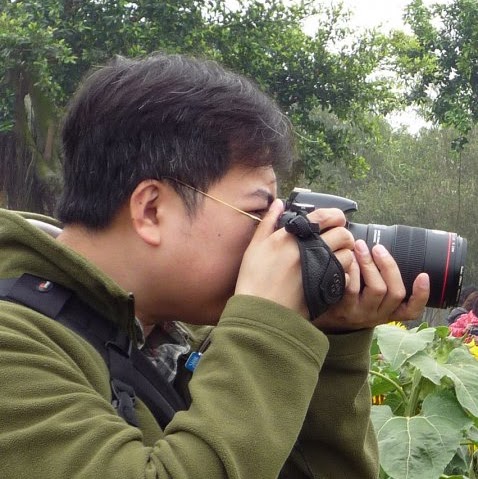John J Lo
age ~69
from Arcadia, CA
- Also known as:
-
- John Jiashyong Lo
- John Jia Shyong Lo
- John S Lo
- Jia Shyong Lo
- John Jia Shyong
- Jack F Lo
- G Shyong Lojohn
- John G
- Lo John G
- Phone and address:
-
158 Fano St, Arcadia, CA 91006
7186317454
John Lo Phones & Addresses
- 158 Fano St, Arcadia, CA 91006 • 7186317454
- 158 Fano St #2, Arcadia, CA 91006 • 6266162438
- 1117 S 10Th Ave, Arcadia, CA 91006 • 6266317454 • 7186317454 • 8183019806
- 18621 58Th St, Flushing, NY 11351
- Fresh Meadows, NY
- San Jose, CA
- Cerritos, CA
- Alexandria, VA
- Irvine, CA
- North Potomac, MD
- Centreville, VA
Us Patents
-
High Speed Ones Complement Adder
view source -
US Patent:6343306, Jan 29, 2002
-
Filed:May 18, 1999
-
Appl. No.:09/313949
-
Inventors:John Lo - Fremont CA
-
Assignee:Sun Microsystems, Inc. - Palo Alto CA
-
International Classification:G06F 750
-
US Classification:708700, 708714, 714807
-
Abstract:A ones complement adder uses two twos complement adders, both of which are coupled to receive first and second addends at their addend inputs, however the first twos complement adder is adapted to output a first sum that is the ones complement sum that would result if no carry occurred upon addition of the first and second addends and the second twos complement adder is adapted to output a second sum that is the ones complement sum that would result if a carry did occur. A selector selects one of the first sum and the second sum as its output (and the output of the ones complement adder) based on whether or not a carry occurred. The indication of whether or not a carry occurred or not can be determined from the carry output of the first complement adder, with the first sum effected by setting the carry input for the first twos complement adder to â0â (no carry in) and the second sum effected by setting the carry input for the second twos complement adder to â1â (carry in). The selector can be a multiplexer with a select input coupled to the carry output of the first twos complement adder.
-
Apparatus And Method For Applying Multiple Crc Generators To Crc Calculation
view source -
US Patent:6732317, May 4, 2004
-
Filed:Oct 23, 2000
-
Appl. No.:09/695619
-
Inventors:John M. Lo - Fremont CA
-
Assignee:Sun Microsystems, Inc. - Santa Clara CA
-
International Classification:H03M 1300
-
US Classification:714757, 714758, 714781, 714782, 714783, 714784
-
Abstract:An apparatus and method for generating a cyclic redundancy code with multiple cyclic redundancy code circuits are disclosed. High throughput data protocols can work more robustly if accompanied by high throughput error checking to verify the integrity of the communicated data. One approach of improving the performance of cyclic redundancy code generation hardware that can save money and development time is to combine multiple cyclic redundancy code circuits to perform the error checking. Data received is processed across the multiple cyclic redundancy code circuits. Future cyclic redundancy code circuits can also be combined according to this approach.
-
Variable Length Inter-Packet Gap
view source -
US Patent:7095737, Aug 22, 2006
-
Filed:Feb 28, 2002
-
Appl. No.:10/087056
-
Inventors:John M. Lo - Fremont CA, US
-
Assignee:Sun Microsystems, Inc. - Santa Clara CA
-
International Classification:H04L 12/28
-
US Classification:370389, 370445, 370468
-
Abstract:A method and apparatus are provided for determining a suitable inter-packet gap (IPG), or a suitable extension to be added to a default IPG as a packet is processed. The apparatus includes an adder to add an incremental measure of a packet to an existing measure and produce a new measure (e. g. , in bytes). The apparatus further includes a comparator which, if the new measure exceeds a programmable threshold (e. g. , a stretch ratio), issues a signal to increase the IPG and decreases the new measure by the threshold. The current measure is then stored (e. g. , in a register) for addition to the next incremental measure. A counter tracks the number of signals received before the end of the packet, at which time the total is forwarded to a component configured to insert or apply the IPG and the counter is reset for the next packet.
-
Method And Apparatus For Determining A Status Of An Asynchronous Memory
view source -
US Patent:7293149, Nov 6, 2007
-
Filed:May 30, 2003
-
Appl. No.:10/448826
-
Inventors:John Lo - Fremont CA, US
-
Assignee:Sun Microsystems Inc. - Santa Clara CA
-
International Classification:G06F 12/00
-
US Classification:711167
-
Abstract:A method and apparatus for facilitating the determination of a status of an asynchronous memory (e. g. , how full or empty the memory is). A write pointer to the memory is maintained in a first clock domain; a read pointer is maintained in a second clock domain. The pointers are maintained in a non-binary code format promoting minimum bit transitions as the pointers increment (e. g. , Gray code). Each pointer is transmitted to the other clock domain through synchronizers. Each synchronizer comprises multiple sets of D flip-flops. In each clock domain, the write pointer and read pointer values are converted to mathematically useful formats (e. g. , binary), and their difference is calculated. The difference indicates how much space in the memory is or is not used, and may be compared to a non-zero threshold.
-
Method And Apparatus For Avoiding Collisions During Packet Enqueue And Dequeue
view source -
US Patent:7404058, Jul 22, 2008
-
Filed:May 31, 2003
-
Appl. No.:10/448960
-
Inventors:John M. Lo - Fremont CA, US
Charles T. Cheng - San Jose CA, US -
Assignee:Sun Microsystems, Inc. - Santa Clara CA
-
International Classification:G06F 12/00
G06F 5/10
G06F 5/16
H04L 12/56 -
US Classification:711168, 711101, 711110, 711149, 711150, 710 39, 710 52, 710 54, 370229, 370412
-
Abstract:A method and apparatus for enqueuing and dequeuing packets to and from a shared packet memory, while avoiding collisions. An enqueue process or state machine enqueues packets for a communication connection (e. g. , channel, queue pair, flow). A dequeue process or state machine operating in parallel dequeues packets and forwards them (e. g. , to an InfiniBand node). Packets are stored in the shared packet memory, and status/control information is stored in a control memory that is updated for each packet enqueue and packet dequeue. Prior to updating the packet and/or control memory, each process interfaces with the other to determine if the other process is active and/or to identify the other process' current communication connection. If the enqueue process detects a collision, it pauses (e. g. , for a predetermined number of clock cycles).
-
Method And Apparatus For Determining The Landing Zone Of A Tcp Packet
view source -
US Patent:7453879, Nov 18, 2008
-
Filed:Apr 4, 2005
-
Appl. No.:11/098207
-
Inventors:John M. Lo - Fremont CA, US
-
Assignee:Sun Microsystems, Inc. - Santa Clara CA
-
International Classification:H04L 12/56
-
US Classification:370394
-
Abstract:A method and apparatus for determining whether a TCP packet lands in-zone or out-of-zone of a TCP sequence space. An anchor representing the TCP sequence number of the last TCP data byte, plus one, is updated each time a TCP data packet is received. When a new TCP packet is received, the most significant bit, bit [], is extracted from the anchor. A two-bit value is formed by adding 1 to the extracted bit. This two-bit value is pre-pended to bits [30:0] of the anchor, as bits [32:31], to produce a 33-bit test value. Then, the sequence number of the last TCP byte of the received packet is then compared to the anchor and the test value. If the sequence number is greater than or equal to the anchor, and less than the test value, the packet lands in-zone and may be processed normally.
-
Four-Way Interleaved Fifo Architecture With Look Ahead Conditional Decoder For Pci Applications
view source -
US Patent:60672676, May 23, 2000
-
Filed:Aug 12, 1998
-
Appl. No.:9/132928
-
Inventors:John M. Lo - Fremont CA
-
Assignee:Toshiba America Electronic Components, Inc. - Irvine CA
-
International Classification:G11C 700
-
US Classification:365221
-
Abstract:A FIFO memory apparatus of the present invention includes an array of registers including a plurality of stacked subarrays. A first plurality of multiplexers is provided including one multiplexer for receiving data from each one of the subarrays. A second plurality of multiplexers is also provided each for receiving data from two other multiplexers. One of the second plurality of multiplexers supplies an output for the FIFO memory apparatus, while each of the others, in pairs, supply other multiplexers of the apparatus. The invention uses a four-way interleaved memory architecture for pre-decoding the FIFO read pointer and driving out data from one of the sixteen deep 32-bit wide registers, in advance. In this way, the final stage of the timing critical path is from the Q output of a toggle flip-flop to a two-to-one multiplexer and output buffer. This Q output of the toggle flip-flop is the least significant bit (LSB) of a four-bit counter used to select one of the 16-bit deep, 32-bit wide registers of the FIFO.
-
One Load Conditional Look Ahead Counter
view source -
US Patent:60261412, Feb 15, 2000
-
Filed:Jul 16, 1998
-
Appl. No.:9/118233
-
Inventors:John M. Lo - Fremont CA
-
Assignee:Toshiba America Electronic Components Inc. - Irvine CA
-
International Classification:H03K 2102
-
US Classification:377111
-
Abstract:A high modulus counter is provided for receiving a counter enable (CE) signal which switches between digital states. The counter is a single load conditional look ahead counter having a carry chain isolated from a timing critical path. The counter includes one toggle flip-flop for receiving the CE signal. The flip-flop has a first output and a second output. The first output and the second output are connected to an even counter and an odd counter, respectively. Both the output of the first counter and the output of the second counter are received by each of a plurality of multiplexers which are controlled by the first output of the toggle flip-flop. In this way, the high modulus counter outputs and increments the pointer signals of the odd counter and the even counter, alternatively. The even and odd internal counters are initially set at zero and one, respectively, and each increments by two. A second flip-flop may additionally receive the external CE signal for synchronization.
Name / Title
Company / Classification
Phones & Addresses
Sales
Comfort Leather Sofa Outlet
Furniture Designers & Custom Builders
Furniture Designers & Custom Builders
8-1248 Dundas St E, Mississauga, ON L4Y 2C1
9052720288
9052720288
Religious Leader
Epicentre Church First Evnglcl
Religious Organizations
Religious Organizations
133 Electric Dr # 200, Pasadena, CA 91103
Website: epicentrechurch.org
Website: epicentrechurch.org
Owner
Ares Micro Inc
Computer and Computer Software Stores
Computer and Computer Software Stores
565 Brea Canyon Rd # B, Walnut, CA 91789
Website: ownview.com
Website: ownview.com
Owner
East West Florist
Florists
Florists
2415 Pasadena Ave Ste B, Los Angeles, CA 90031
Lo & Associates
Real Estate Agents and Managers
Real Estate Agents and Managers
2200 S Fremont Ave Ste 202, Alhambra, CA 91803
Executive Director
Chinese Christian Herald Inc
Religious Organizations
Religious Organizations
48 Allen St, New York, NY 10002
Website: cchc.org
Website: cchc.org
Administrator
John Lo
Hotels and Motels
Hotels and Motels
24 Stryker Street, Brooklyn, NY 11223
Owner
John Donuts
Retail Bakery
Retail Bakery
2415 Pasadena Ave, Los Angeles, CA 90031
Medicine Doctors

Dr. John Lo, Flushing NY - DMD (Doctor of Dental Medicine)
view sourceSpecialties:
Dentistry
Address:
3708 Main St Suite 4F, Flushing, NY 11354
7188867222 (Phone)
7188867222 (Phone)
Languages:
English
Resumes

John Lo
view sourceSkills:
Microsoft Office

John K Lo
view source
John Lo
view source
John Propes Lo
view source
John Lo
view source
John Lo
view sourceIndustry:
Consumer Services

John Lo
view source
John Lo
view sourceLawyers & Attorneys

John Yen-Chak Lo - Lawyer
view sourceLicenses:
California - Active 1981
Education:
Univ of California Berkeley
Degree - undergraduate
UC Berkeley SOL Boalt Hall
Degree - law
Degree - undergraduate
UC Berkeley SOL Boalt Hall
Degree - law
Youtube
Plaxo

John Lo Re
view sourceEVO OVE

John Lo Giudici
view sourceVisual Media Solutions

John Lo
view sourceGoogleplus

John Lo
Lived:
Atlanta, GA
Brooklyn, NY
Brooklyn, NY
Work:
JohnLo Photography - Main Photographer (1999)
Education:
St. John's University
Relationship:
Married

John Lo
Work:
SunEdison - Intern (2011)
The Web Picasso - Founder
The Web Picasso - Founder
Education:
Harvard University
Tagline:
Currently on work related leave

John Lo
Lived:
Atlanta, GA
New York, NY
New York, NY
Work:
JohnLo Photography - Wedding photographer
About:
Originally from New York City, but now living in Northwest Georgia... LOVING it!!!!!

John Lo
Work:
John lo

John Lo
Education:
Quarry Bay School

John Lo

John Lo

John Lo
Get Report for John J Lo from Arcadia, CA, age ~69





